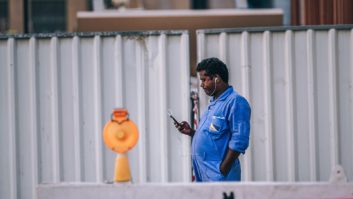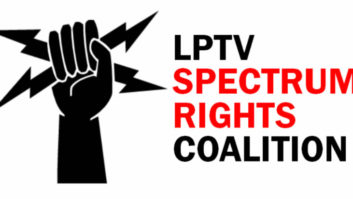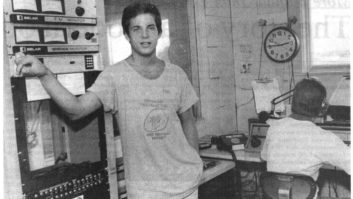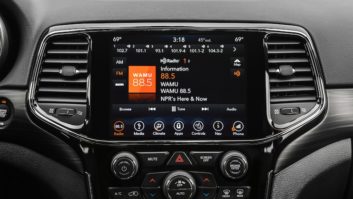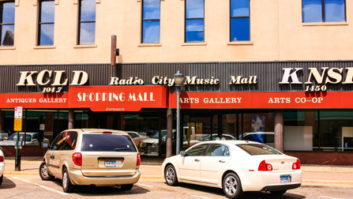The beginning of November has seen a range of massive stories — from the Paul Manafort indictment to the New York City bike path attack to the end of baseball’s World Series. People are engaged in media in a different way indeed than ever before. Yet the uptick in news consumption misses a crucial issue when we talk about community media. How many of you hardcore news junkies can honestly say you get the majority, or even half, of your news from community radio?
The National Federation of Community Broadcasters hosted an October webinar on building responsive community radio news to a crowded house of established stations and new ones, full- and low-power FM noncommercial broadcasters. Many local community media organizations want to provide news coverage for their cities and towns, but are not sure what to do and how to do it.
The good news is that there has never been a better time to do community radio newscasting. Yes, the journalism field is stressed. Yes, money is always a difficulty. But interest is at an all-time high. People are tuning in for analysis and coverage. Even NPR, long a distant second to commercial news/talk radio, is surging ahead of traditional talk radio powerhouses. The question of community media journalism is not if, but how.
The how gets some welcome relief from the march of time. The technology to get into field reporting has seldom been so affordable. Those beautiful $800 Marantz flash recording decks are always an option, if you want, but more and more newsrooms are turning to smartphones and free mobile apps to collect voice actualities and on-the-spot video. The dream of citizen journalism envisioned by the likes of Indymedia in the 1990s is today more real than it ever was before.
As a former community radio news director, one who helped to take a once-a-week newscast to a daily half-hour program, I am often asked for recommendations in the area of community media journalism. Right now, it is critical that station leaders who want to do community radio news think long and hard about their objectives as well as the future. A strong argument can be made to indicate that future is not in the sort of news programming legacy audiences long associated with stations, but rather something new.

Among community radio loyalists, the locally produced news hour or half-hour program is a commonly articulated goal. It supplements your 168 hours per week with area voices and matters that affect your neighbors. Nationwide, local news coverage has been in decline, sparking fears of government corruption. Community radio news, it seems, fills a vacuum and provides that core public service stations all aspire to meet.
Or do they?
The truth is that a community radio news hour or half-hour is incredibly resource intensive. Many stations depend on volunteers to produce the newscasts, with perhaps a staff person to facilitate news programming. It often takes hours out of a day to write, record, edit and, for many stations, turn loose live on the air a daily news program. However, the fact is many of even a community radio station’s most ardent fans aren’t there to hear it. Instead, they’re picking up news on social media and the rest of the web to keep informed.
Less charitable listeners may give you an earful about community radio news too, or simply turn it off. Numerous besieged stations get into the news hour or half-hour without a big budget to execute or plan to sustain it. Without the people or resources, there is a real danger the “local news” can repel more people than it attracts, by ending up a mish-mash of content that is not local beat reporters creating immersive journalism or conversation that informs audiences, but rather fills a schedule hole. Ultimately no one wants that. More pointedly, people can find better coverage elsewhere, and do.
The community radio news hour or half-hour may not be completely dead. Yet the drift of news audiences to online outlets provides an exhilarating opportunity for a community radio station to remake its journalism in stimulating ways.
Social media reporting is fertile territory. The University of Florida, for example, covered protests against a campus speech by white supremacist Richard Spencer with students focused on new media. By going at this story community radio-style — equipping students with ethics guides, maps, phones and cameras — the coverage went to both radio broadcast and digital platforms, like Instagram and the web. Undoubtedly, journalism instructors could have had students devise a half-hour of audio and writing, but the combination of visual and audio drew out the most compelling elements, and made it far more memorable.
How about telling a story in your community live and in-person? ProPublica’s Adriana Gallardo recently reflected on the impact live-event storytelling as a way to educate audiences. Such endeavors, she rightly says, are examples of a medium that acts in inclusive, innovative ways, and sees communities in a different fashion.
Whatever your community radio station decides, we are in a rare moment in time. Our local journalism options are shrinking as interest grows. Community radio can contribute to its cities and towns. However, rethinking local radio journalism is a top priority.





